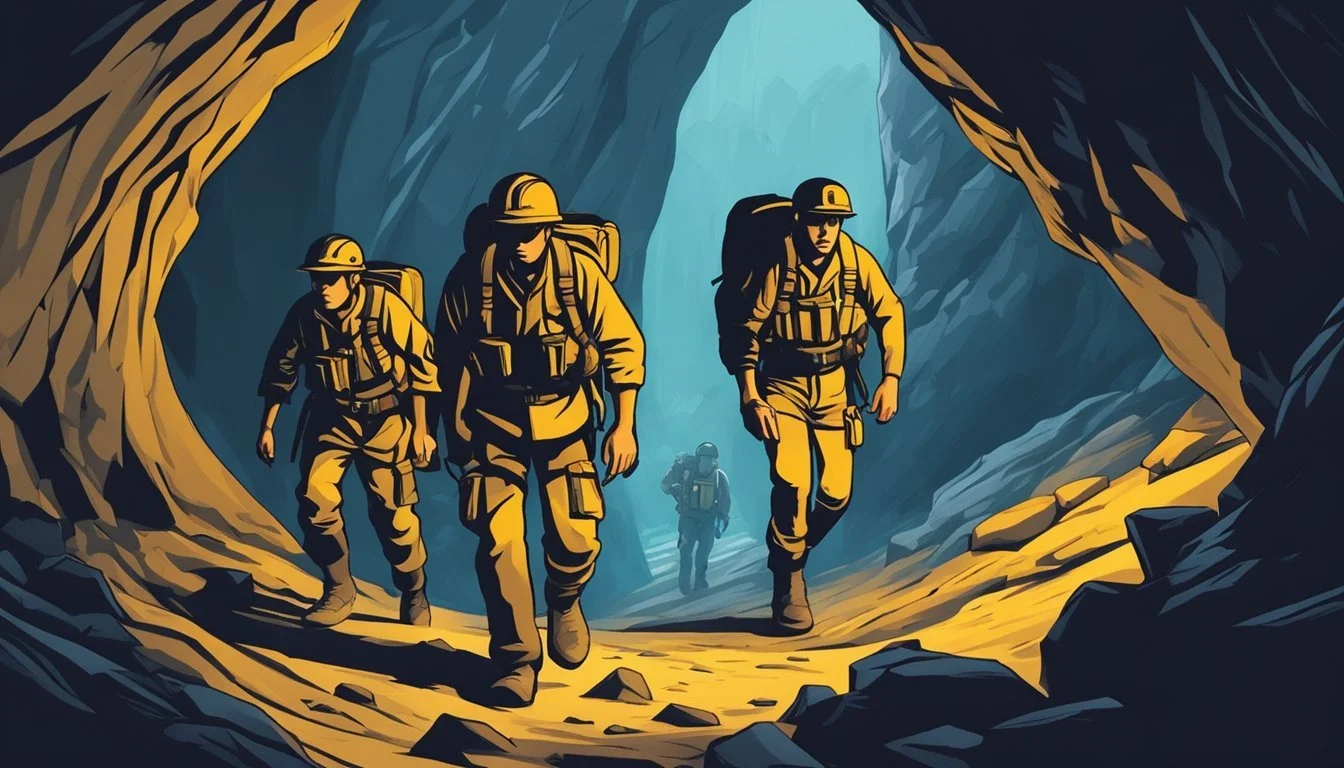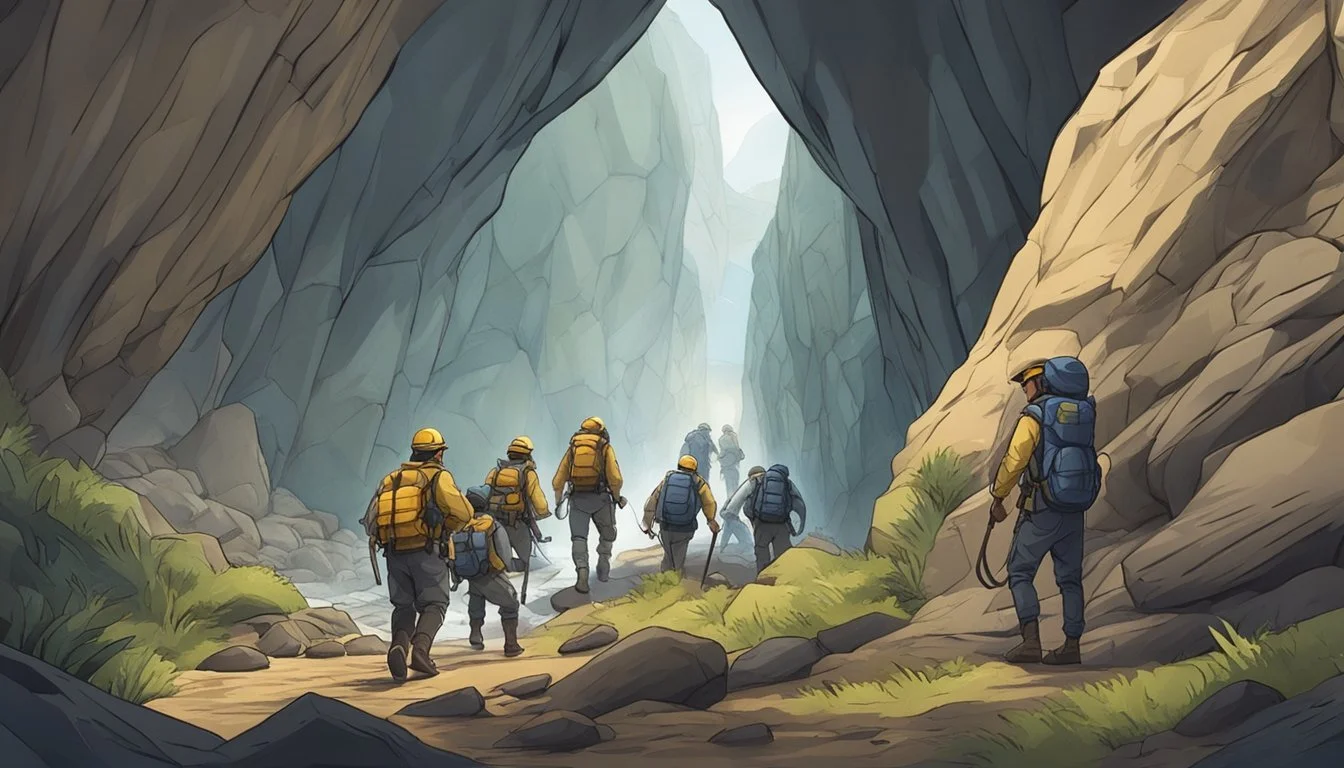Cave Calamity: The True Drama of 'The Rescue'
Tham Luang's 18-Day Ordeal
In June 2018, a routine outing turned into a gripping international saga when twelve young soccer players and their coach became trapped in Thailand's Tham Luang cave system. Rising floodwaters cut off their escape, sparking a massive rescue effort that captured global attention. The extraordinary mission to save the trapped team involved over 10,000 people, including expert cave divers from around the world.
"The Rescue" chronicles this harrowing event, offering viewers an inside look at the daring operation. The documentary showcases the incredible challenges faced by rescuers as they navigated treacherous underwater passages and raced against time. It highlights the ingenuity, bravery, and collaboration required to overcome seemingly insurmountable odds.
This cave calamity tested human resilience and ingenuity to their limits. The rescue operation pushed the boundaries of cave diving expertise and required innovative solutions to extract the boys safely. "The Rescue" brings this dramatic true story to life, revealing the intense pressure, difficult decisions, and moments of triumph that defined this remarkable feat of human perseverance.
Historical Context
Thailand's Tham Luang cave system gained global attention in 2018. Its geography and cultural significance played key roles in the dramatic rescue that unfolded.
Geography of Tham Luang
Tham Luang Nang Non, located in Chiang Rai province, Northern Thailand, is a vast cave system stretching over 10 kilometers. Its intricate network of tunnels and chambers is formed from limestone rock.
The cave's entrance sits at the base of the Doi Nang Non mountain range. During monsoon season, heavy rains can rapidly flood the caverns, making exploration dangerous.
Tham Luang's complex layout challenged rescuers. Narrow passages and underwater sections required specialized diving skills to navigate.
Cultural Significance of Caves in Thailand
Caves hold deep spiritual importance in Thai culture. Many are considered sacred spaces, often housing Buddhist shrines or ancient artifacts.
Tham Luang is no exception. Its name, meaning "Great Cave of the Sleeping Lady," comes from a local legend about a princess who took refuge there.
Thais often visit caves for meditation or to make offerings. This cultural reverence added emotional weight to the rescue efforts, galvanizing national support.
The cave's popularity as a tourist attraction also played a role. Familiarity with its entrance area helped initial search efforts, though the inner recesses remained largely unexplored.
The Events Leading to The Rescue
The Tham Luang cave incident began as a routine outing for a youth football team but rapidly escalated into a crisis due to unexpected weather conditions. The sequence of events unfolded quickly, trapping 12 boys and their coach deep within the cave system.
Youth Football Team's Excursion
On June 23, 2018, the Wild Boars football team, consisting of 12 boys aged 11-16, embarked on an adventure with their 25-year-old assistant coach, Ekkapol Chantawong, known as Coach Ek. The team entered Tham Luang cave in northern Thailand after football practice. This cave was a familiar spot for the boys, who had explored it before.
The group planned a short excursion, intending to write their names on the cave wall as a team-building exercise. They ventured deeper into the cave system, unaware of the impending danger.
Onset of the Monsoon Season
As the team explored the cave, heavy rains began outside, marking the early arrival of the monsoon season. The sudden downpour caused water levels to rise rapidly within the cave system. The flooding blocked the team's exit route, forcing them to retreat further into the cave.
The rising water levels created strong currents, making it impossible for the group to swim out. The boys and their coach found themselves stranded on a small, elevated mud bank about 4 kilometers from the cave entrance.
Search efforts began when parents reported the boys missing. Rescuers discovered abandoned bicycles and football boots at the cave entrance, confirming the team was trapped inside.
The Rescue Mission
The rescue of 12 boys and their coach from Tham Luang cave captivated the world. It involved a complex operation spanning 18 days, requiring expertise from Thai authorities, international divers, and local volunteers.
Initial Efforts by Thai Navy SEALs
Thai Navy SEALs led the initial rescue attempts. They faced treacherous conditions inside the flooded cave system. Rising water levels and strong currents hampered their progress.
The SEALs established a forward operating base inside the cave. They provided food, water, and medical care to the trapped group. However, extracting the boys proved extremely challenging.
Oxygen levels in the cave dropped dangerously low. This added urgency to the rescue efforts.
International Diving Team Involvement
As the situation grew dire, expert cave divers from around the world joined the mission. British divers Rick Stanton and John Volanthen made the crucial discovery of the boys on July 2, 2018.
The international team devised a daring rescue plan. It involved sedating the boys and guiding them through narrow, submerged passages. Each boy was equipped with a full-face mask and accompanied by two divers.
Australian anesthetist Richard Harris played a key role. He assessed the boys' health and administered the sedatives.
Role of Volunteers and Local Community
Local volunteers played a vital part in the rescue operation. They cooked meals, washed clothes, and provided other essential support.
Farmers allowed their fields to be flooded. This reduced water levels inside the cave by diverting flow.
Over 10,000 people contributed to the effort. This included soldiers, government officials, and ordinary citizens.
The rescue showcased extraordinary cooperation between Thai authorities, international experts, and the local community.
Key Figures in the Rescue
The Tham Luang cave rescue involved a diverse team of experts and authorities who played crucial roles in saving the trapped boys and their coach. Their combined efforts and specialized skills were instrumental in overcoming the immense challenges posed by the flooded cave system.
Expert Divers and Anesthesiologist
British cave divers Rick Stanton and John Volanthen led the diving team that first located the stranded group. Their expertise in navigating tight, underwater passages proved invaluable. Dr. Richard Harris, an Australian anesthesiologist and cave diver, made the critical decision to sedate the boys before extraction.
This unprecedented move allowed the rescue team to safely transport the children through the treacherous underwater sections. The divers faced extreme risks, maneuvering through narrow tunnels with near-zero visibility while carrying precious human cargo.
Thailand's Military and Rescue Coordination
The Royal Thai Navy SEALs spearheaded the rescue operation, working tirelessly to pump water from the cave and establish supply lines. Their efforts were crucial in creating conditions that allowed the dive rescue to proceed.
Thai military personnel coordinated with international teams, managing logistics and resources. This collaboration ensured a steady flow of oxygen tanks, medical supplies, and other essential equipment to the cave site. The military's organizational skills and local knowledge complemented the technical expertise of the cave diving specialists.
Diving Operations and Challenges
The rescue operation faced extreme conditions in the flooded cave system. Divers contended with tight passages, near-zero visibility, and dwindling oxygen levels as they worked to save the trapped boys and their coach.
Navigating the Cave System
Cave divers maneuvered through narrow, submerged tunnels in complete darkness. Powerful currents and jagged rocks posed constant dangers. Divers used guide ropes to navigate the complex network of passages.
Some sections required removing oxygen tanks to squeeze through. The journey to reach the trapped group took skilled divers 3 hours each way. Less experienced Thai Navy SEALs struggled with the technical cave diving required.
Critical Oxygen Supply Issues
Oxygen levels in the cave chamber housing the boys dropped to 15% as carbon dioxide built up. Normal air contains 21% oxygen. Below 16% can cause impaired judgment and unconsciousness.
Rescuers urgently installed an oxygen supply line. They also provided the group with oxygen masks. Limited air reserves in scuba tanks created a tight timeline for the extraction.
Each rescued boy was given full-face masks for the dangerous underwater journey out. Skilled divers administered anti-anxiety drugs to keep the children calm during the 3-hour trip through murky waters.
Aftermath and Impact
The Thai cave rescue left a lasting impression on those directly involved and resonated globally. It sparked discussions about survival, resilience, and international cooperation in crisis situations.
Immediate Aftereffect on the Boys and Coach
The 12 boys and their coach faced physical and emotional challenges after their ordeal. They underwent medical evaluations and spent time in hospital to recover from malnutrition and infections. Psychologists worked with them to address potential trauma and anxiety.
The football team members gained unexpected fame. They attended numerous events and interviews, sharing their experiences. Some struggled with the sudden attention, while others embraced their new public roles.
The coach, Ekapol Chantawong, received both praise for keeping the boys calm and criticism for leading them into the cave. He later became a Buddhist monk, seeking to process the events.
Global Response and Recognition
The rescue effort united people worldwide. Donations poured in to support the operation and the boys' families. Media coverage was extensive, with millions following the dramatic events unfold.
The international diving team received honors in their home countries. Rick Stanton and John Volanthen were awarded the George Medal in the UK. Australian divers Richard Harris and Craig Challen were named Australians of the Year.
The story inspired multiple films and documentaries. These productions aimed to capture the authenticity of the rescue while highlighting themes of human perseverance and cooperation.
Media Representation
The Thai cave rescue captured global attention and inspired various media portrayals. Documentaries and feature films aimed to tell this incredible story, each offering unique perspectives on the events.
Documentaries and Filming
National Geographic's "The Rescue" stands out as a prominent documentary on the Thai cave incident. Directed by Elizabeth Chai Vasarhelyi and Jimmy Chin, it provides an in-depth look at the cave divers' efforts. The film combines interviews, reenactments, and never-before-seen footage to create a comprehensive narrative.
Other documentaries also emerged, each focusing on different aspects of the rescue. These films often highlighted the international collaboration and technical challenges faced by the rescue teams.
Dramatizations and Limited Series
Netflix and other streaming platforms produced dramatized versions of the rescue. "Thai Cave Rescue," a limited series, offered a fictionalized account of the events, focusing on the boys' experiences inside the cave.
"Thirteen Lives," directed by Ron Howard, brought a Hollywood perspective to the story. This feature film recreated the rescue operation with a star-studded cast, aiming to capture the tension and heroism of the real-life events.
Pure Flix, a faith-based production company, also announced plans for their own film adaptation, intending to emphasize themes of hope and perseverance throughout the ordeal.
Legacy and Lessons Learned
The Thai cave rescue left an indelible mark on rescue operations worldwide. It sparked improvements in emergency response and underscored the importance of cave safety education.
Advancements in Rescue Techniques
The unprecedented scale of the Tham Luang cave rescue operation drove significant innovations. Cave diving teams refined their protocols for navigating flooded passages. New equipment designs emerged, tailored for tight, underwater spaces.
Communication systems saw upgrades to function in challenging subterranean environments. Pumping technologies improved to manage large volumes of water more efficiently.
These advancements benefit not just cave rescues, but also mining accidents and disaster response scenarios. The lessons learned continue to shape training programs for rescue divers and first responders globally.
Educational and Safety Measures
The incident prompted a reevaluation of youth safety practices in adventure sports. Many countries implemented stricter regulations for cave exploration, especially during rainy seasons.
Schools incorporated cave safety into outdoor education curricula. Youth football teams, like the Wild Boars, now receive basic survival training as part of their programs.
Public awareness campaigns highlight the risks of unmarked caves. Tourist sites installed improved warning systems and barriers. Local communities near cave systems started offering guided tours with trained professionals to discourage unsupervised exploration.
These measures aim to prevent future incidents while promoting responsible enjoyment of natural wonders.







